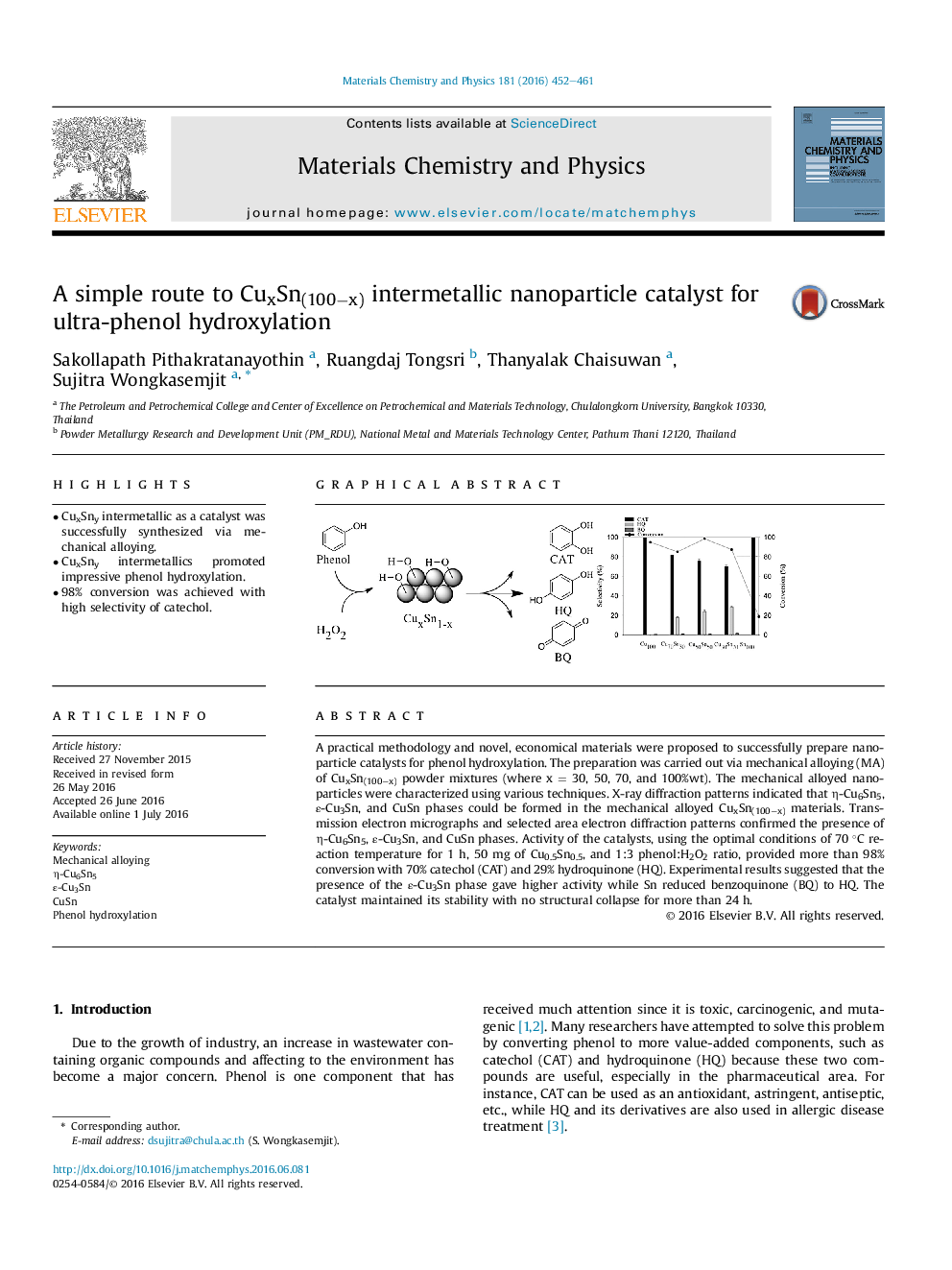| Article ID | Journal | Published Year | Pages | File Type |
|---|---|---|---|---|
| 1520486 | Materials Chemistry and Physics | 2016 | 10 Pages |
•CuxSny intermetallic as a catalyst was successfully synthesized via mechanical alloying.•CuxSny intermetallics promoted impressive phenol hydroxylation.•98% conversion was achieved with high selectivity of catechol.
A practical methodology and novel, economical materials were proposed to successfully prepare nanoparticle catalysts for phenol hydroxylation. The preparation was carried out via mechanical alloying (MA) of CuxSn(100−x) powder mixtures (where x = 30, 50, 70, and 100%wt). The mechanical alloyed nanoparticles were characterized using various techniques. X-ray diffraction patterns indicated that η-Cu6Sn5, ε-Cu3Sn, and CuSn phases could be formed in the mechanical alloyed CuxSn(100−x) materials. Transmission electron micrographs and selected area electron diffraction patterns confirmed the presence of η-Cu6Sn5, ε-Cu3Sn, and CuSn phases. Activity of the catalysts, using the optimal conditions of 70 °C reaction temperature for 1 h, 50 mg of Cu0.5Sn0.5, and 1:3 phenol:H2O2 ratio, provided more than 98% conversion with 70% catechol (CAT) and 29% hydroquinone (HQ). Experimental results suggested that the presence of the ε-Cu3Sn phase gave higher activity while Sn reduced benzoquinone (BQ) to HQ. The catalyst maintained its stability with no structural collapse for more than 24 h.
Graphical abstractFigure optionsDownload full-size imageDownload as PowerPoint slide
